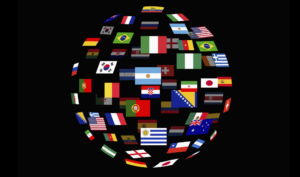
How Leaders Can Incorporate Narrative Intelligence for Effective DEI Efforts
My life’s work is rooted in the power of story. Growing up as an outsider of the dominant cultural groups I was around, I’ve witnessed

My life’s work is rooted in the power of story. Growing up as an outsider of the dominant cultural groups I was around, I’ve witnessed

Are you disturbed by news about organizations backtracking on workplace diversity and inclusion commitments? I certainly am. For example, a recent Wall Street Journal article

If pay transparency isn’t yet a hot topic in your organization, it soon will be. Recently, several states have passed pay transparency laws, and others

No question about it. Strong internal communication is critical to a strong business. But it’s not easy — especially when workplace dynamics are constantly fluctuating.

Is your organization striving to create a more inclusive work culture? If so, you’re not alone. Many HR and business leaders are committed to improving

When the pandemic arrived in 2020, everyone’s definition of work changed in a heartbeat. Most people headed home, leaving their offices, cubicles, water coolers, and

In today’s diverse, dynamic work world, employers increasingly recognize the transformative power of diversity, equity, and inclusion. Still, concerns often arise about the cost of

We all share a deep desire for belonging. From Abraham Maslow to Brené Brown, experts agree that this “indescribable feeling of being welcomed” is a

In recent years, diversity, equity, and inclusion (DEI) has become a red-hot topic among employers and human resources professionals who plan and manage these initiatives.

Diversity, Equity, and Inclusion (DEI) is by definition a people-centered business endeavor. So at first glance, the phrase “people-first DEI” may seem redundant. But that’s

Sponsored by ADP The WOTC (Work Opportunity Tax Credit) offers businesses a tremendous opportunity for tax credits based on hiring. But for organizations to participate

In the past, many employers dismissed the idea of building an international workforce. Those who could attract local talent considered it unnecessary. Others didn’t have

In recent years, I’ve been encouraged by a groundswell of employers that are choosing to embrace “culture-add” people practices. In fact, several months ago, I

Pandemic-related mental health is undoubtedly top-of-mind. In addition, there tends to be an uptick in dialog about mental health this time of year because May

Women hold more than half of American jobs. Yet, they make up just 27 percent of executive and senior-level management in S&P 500 companies. Meanwhile,

The workplace is becoming more diverse as organizations offer remote and hybrid work options and build a global workforce. With these big changes comes a

If the last year taught us anything, it’s that we must re-examine any foregone conclusions we have about the workforce. The global pandemic, focus on

Anyone can launch a DEI initiative. The big challenge is to succeed. What’s the biggest roadblock? Human unconscious biases. Psychologists have shown over and over

The future of work is hybrid–with over 50 percent of people saying they’d prefer to work from home at least three days per week. But

At this point, it’s well known that building diverse teams of employees offers a competitive advantage to organizations everywhere. It’s hard to argue with the

The last year and a half has been a reckoning for workplaces; companies addressed the paradigm-shattering COVID-19 crisis, while also addressing issues of social injustice

As a human resources professional, you’re no stranger to thinking on your feet and solving complex problems. You never quite know what you’re going to

The racial gaps that exist between White and Black Americans are astounding. From social injustices to economic disparities, Black Americans face significant challenges trying to

President Joe Biden held his post for only a few hours before rescinding former President Donald Trump’s executive order banning some forms of diversity and

COVID-19 inevitably uprooted the way our society works. Due to the pandemic, organizations have uncovered cracks in their foundations that shed light on long-standing social